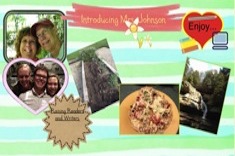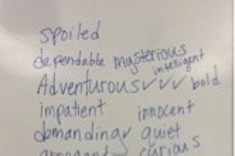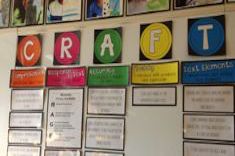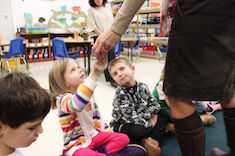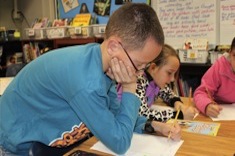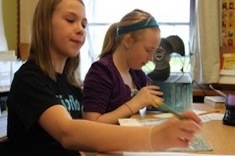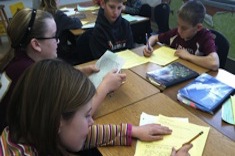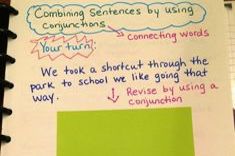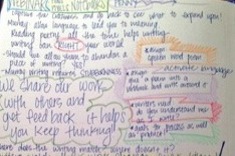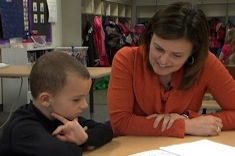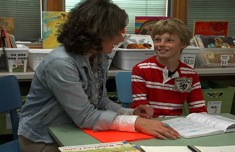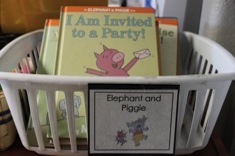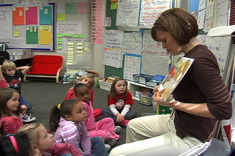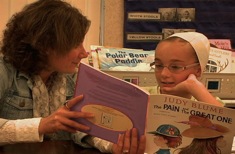Teaching Writing
Everyone who writes for Choice Literacy loves teaching writing, because we all write ourselves. We know it is "hard fun," as Donald Murray famously said—exasperating and exhilarating at the same time. The writing workshops you will read about here and see in our videos are busy, noisy, vibrant places. And most days, we wouldn't want to be anywhere else than in the midst of 'em! Here is where you'll find our latest discoveries, insights, and occasional boneheaded mistakes in teaching writing.
Latest Content
10 Ways to Publish Student Work
Erin Ocon compiles a list of the ways she publishes writing of her teen students.
Letter Writing with High School Students
Kim Campbell instills a love for a lost art in her high school students.
Twitter in the Classroom
Katherine Sokolowski and her students find Twitter is an essential element in their fifth-grade reading workshop.
Choosing the Right Tool for Your Message
Julie Johnson has advice on classroom uses of tech resources.
Organizing Craft Minilessons
Mary Helen Gensch concludes her series on crafting your own minilessons with tips on organizing and storing your plans.
How to Notice: Mining Children’s Books for Craft Minilessons
This is the second installment in our new series on creating your own writer’s craft minilessons.
Character Traits and Vocabulary Development
Gigi McAllister shares how she combines vocabulary instruction with analysis of character traits in her fourth-grade classroom.
Finding Craft Minilessons in the Children’s Books You Love
Mary Helen Gensch explains how to find craft lessons in beloved children’s books. She uses a mentor text with an engaging main character to describe the process. This is the first installment in a three-part series.
Supporting Introverts in Literacy Workshops
Kim Campbell has suggestions for ways teachers can help introverts have more say in literacy workshops.
Slow Thinkers
Gigi McAllister realizes she is a slow thinker, and this makes her reconsider some of her classroom practices to support children who need more time to respond.
Dictation in Fourth Grade: Conferring with Donovan
Beth Lawson helps fourth grader Donovan focus his many ideas for writing through some dictation in a writing conference.
The Silent Period
Do you have English language learners in the silent period in your school? Stella Villalba has tips for teachers working with them.
Second-Grade Nonfiction Writing Share
Sean Moore leads his second graders in a whole-class discussion of nonfiction writing, including a partner share.
Shorter Research Projects: Rethinking Notetaking Strategies
Katherine Sokolowski is assigning shorter research projects in her fifth-grade classroom as a way to help students acquire notetaking skills and understand the boundaries of plagiarism.
Visualizing Plot Points: The Roller Coaster Conference
Beth Lawson helps a child visualize a mystery story he is writing as a roller coaster with ups and downs, and twists and turns.
The Weight of Stories
Some of our students lead such hard lives. Christy Rush-Levine explores how teachers can keep from being dragged into the undertow of the most difficult situations children face.
Peer Evaluation of Student Writing
Megan Ginther found she was spending too much time responding to student writing, and just as important, taking on too much of the responsibility for improvement. She tackled the issue by developing a new program for peer evaluation of student writing.
Using Writing Notebooks Authentically with My Fifth-Grade Students
Katherine Sokolowski reflects on a key component of her writing workshop, and finds ways for using writing notebooks more authentically.
My Middle Schoolers Still Can’t Spell!: Focusing on Individual Students
Gretchen Taylor concludes her two-part series on spelling instruction in middle school. In this installment, Gretchen visits a colleague in the primary grades to get advice and practical insight.
Rethinking Grammar Instruction in High School
What conventions can be taught in a way that sticks with older adolescents? Gretchen Schroeder slows down and focuses to improve her instruction.
Writing Homework
If your students are already comfortable with an unstructured requirement of 20-30 minutes of reading each night, you may find adding 10 minutes of writing at home works wonders in fostering writing skills. Katherine Sokolowski explains how the assignment works in her classroom.
Conferring About the Author
Beth Lawson confers with a fourth grader about her “about the author” blurb, a great chance to learn more about students’ home passions.
My Middle Schoolers Can’t Spell!
Gretchen Taylor has a common teacher's lament about spelling, so she decides to do something about it. This is the first installment in a two-part series.
First-Grade Humor: Conferring with Jude
Katie DiCesare confers with first grader Jude. He is inspired to use humor in his writing by Captain Underpants.
Getting Traction When There Is Nothing to Write About
Mary Lee Hahn finds herself stuck with nothing to write about at a writing retreat. She explores tools and strategies to get unstuck, and finds they are the same ones that work with writers of any age in classrooms.
Personal Narratives and Memoir: Conferring with Bode
Ruth Ayres confers with Bode about the difference between personal narratives and memoirs, and the value of mining the writing journal for topics.
Teacher as Mentor Writer
Tony Keefer takes the leap and commits to sharing more of his writing process with students.
Books for Studying Illustration with First Graders
Katie DiCesare has suggestions for books to support an illustration unit early in the year.
Understanding Study: Noticing Pictures
Katie DiCesare’s favorite beginning unit with first graders focuses on illustration.
Conferring About Illustrations
Ruth Ayres encourages a young writer to emulate a favorite illustrator.
Browse Content By
Type
Category
- Assessment Tools
- Big Fresh Archives
- Booklists
- Choice Numeracy
- Classroom Design
- Common Core
- Community Building
- Conferring
- Content Literacy
- Digital Literacy
- English Language Learners
- Equity
- Family Relations
- Free Samples
- Guiding Groups
- Leadership
- Literacy Coaches
- Mentor Texts
- Minilessons
- New Teacher Mentors
- Podcasts
- Poetry
- Quote Collections
- Reading Strategies
- Self Care
- Struggling and Striving Learners
- Talking and Listening
- Teacher Study Groups
- Teaching Reading
- Teaching Writing
- Word Study and Vocabulary
Author
- Melissa Quimby
- Nawal Qarooni
- Gwen Blumberg
- Julie Cox
- The Lead Learners
- Hannah Tills
- Josie Stewart
- Ruth Metcalfe
- Mallory Messenger
- Becca Burk
- Jodie Bailey
- Vivian Chen
- Mary Brower
- Tiffany Abbott Fuller
- Stephanie Affinito
- Ruth Ayres
- Leigh Anne Eck
- Heather Fisher
- Shari Frost
- Julie Johnson
- Suzy Kaback
- Gigi McAllister
- Shirl McPhillips
- Melanie Meehan
- Cathy Mere
- Debbie Miller
- Tara Barnett and Kate Mills
- Tammy Mulligan
- Dana Murphy
- Bitsy Parks
- David Pittman
- Brenda Power
- Heather Rader
- Matt Renwick
- Mandy Robek
- Christy Rush-Levine
- Gretchen Schroeder
- Jen Schwanke
- Brian Sepe
- Katherine Sokolowski
- Stella Villalba
- Jennifer Vincent
Grade Level
Choice Literacy Membership
Articles
Get full access to all Choice Literacy article content
Videos
Get full access to all Choice Literacy video content
Courses
Access Choice Literacy course curriculum and training




